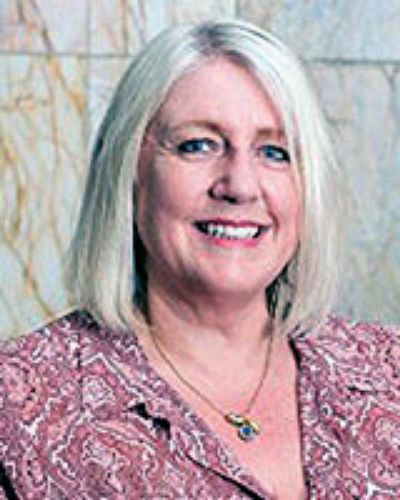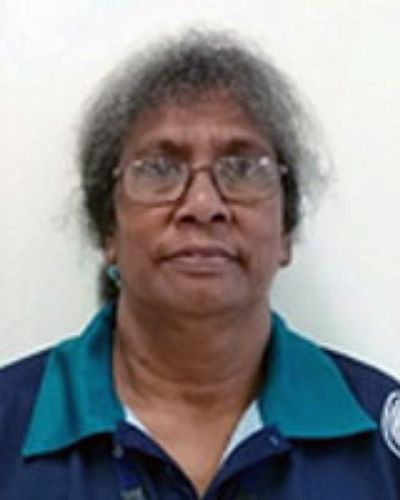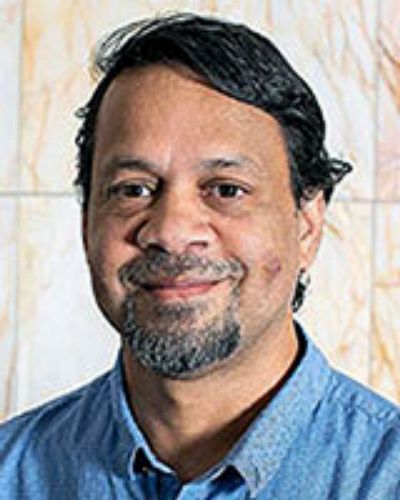Context
Aboriginal and Torres Strait Islander peoples experience more complex health issues, significantly higher rates of chronic disease and lower life expectancy than the general population1. Addressing these health inequities therefore remains a vital area of health research. Quality health research has the potential to contribute to improvements in health care by adding to the knowledge base on disease prevalence, risk and protective factors, effectiveness of treatment or public health interventions, and healthcare costs and use2. However, health research within Aboriginal and Torres Strait Islander communities has not always brought tangible benefits to research participants3. Justifiably, Aboriginal and Torres Strait Islander peoples may be sceptical about the value of research, particularly in relation to the health and social changes that the research promises3-5. The extent to which research is seen as valuable depends on its nature, quantity, quality and the translational outcomes3.
To ensure health research is conducted in a culturally appropriate and ethical manner and has tangible research benefits, funding bodies such as the National Health and Medical Research Council (NHMRC) and research ethic committees require researchers to demonstrate that their research within Aboriginal and Torres Strait Islander populations conforms to ethics standards6. Other guidelines and frameworks have been developed in consultation with Indigenous stakeholders to ensure that the needs of Aboriginal and Torres Strait Islander communities are met, with each having its own research principles. In addition to the NHMRC guidelines6 and its accompanying document, Keeping research on track II7, the most common guidelines for Indigenous health research include Guidelines for ethical research in Australian Indigenous studies8; The NHMRC Road Map, a strategic framework for improving Aboriginal and Torres Strait Islander health through research (Road Map I, II & III)9-11; and Aboriginal Health and Medical Research Council of New South Wales Guidelines for Research into Aboriginal Health: key principles12.
Issue
For non-Indigenous researchers working with Aboriginal and Torres Strait Islander communities, applying these guidelines may seem daunting, and putting them into practice can be challenging13-15. There is often little appreciation of what is involved, the time needed, and an understanding of how important it is to ensure processes are thought through. A failure to grasp the requirements runs the risk of researchers just ‘ticking the boxes’ on applications and grants without fully understanding the complexities of ethical research. Researchers need to have a good understanding of what these guidelines mean and how they can be implemented practically, if they are to truly incorporate them into their research. According to Harrison, in Laycock et al ‘The ethics application is what researchers focus on, when really ethics are so much more - they are the foundations of the research’ (p. 30)16. Without deep understanding and a genuine desire to conform to these core values, non-Indigenous researchers run the risk of conducting unethical and culturally inappropriate research. Historically, researchers have been criticised (often legitimately)16,17 for placing their own interests and career advancement above the benefit to the communities involved. While there are many motivations for research that are often well intentioned, it is imperative that community ownership and benefit to the community are at the forefront of any research conducted.
Health equity for Aboriginal and Torres Strait Islander peoples is more likely to be achieved through improved research processes and ethics frameworks to keep researchers accountable2. Few studies report the processes used to conduct successful and appropriate research within Indigenous communities17, and the majority of publications13,17-19 concentrate on Aboriginal and not Torres Strait Islander communities. The aim of this article is to outline how the Healthy Ageing Research Team (HART) conducted a research study with Torres Strait Island communities. A reflection of experiences as Indigenous and non-Indigenous researchers in applying ethical approaches to our research is presented, incorporating the practice of reflexivity and the valuable lessons learnt along the way.
The research team
HART is a team of clinician researchers in Far North Queensland, Australia who have been providing clinical aged-care services across the Torres Strait for over 20 years. The team members who conducted this research comprised a Torres Strait Islander Health Worker, an Aboriginal senior medical officer, and three non-Indigenous clinicians (geriatrician, neuropsychologist and physiotherapist).
The research context
In 2015, HART was awarded NHMRC funding to conduct a 3-year dementia prevalence study across Torres Strait communities. Dementia is a National Health Priority in recognition that it is a growing public health issue with significant social, medical and financial implications20. The number of people diagnosed with dementia in Australia is expected to increase dramatically over the next few decades to about one million by 205821. Accurate prevalence figures are therefore critical for future planning and provision of appropriate care for people with dementia and their carers. Dementia research is even more urgent for Aboriginal and Torres Strait Islander communities, where rates of dementia are three to five times higher than the general population22-24.
Outcomes of the research are reported elsewhere24. However, many lessons were learned along the way in conducting ethical research, and sharing HART’s experiences may provide guidance to prospective researchers.
Ethics approval
The study received ethics approval from the Far North Queensland Human Ethics Research Committee (HREC/13/QCH/129 - 878) and James Cook University (H5495).
Lessons learned
Establishment of respectful partnerships
Building of relationships is the first step outlined in Keeping research on track II7. The importance of maintaining a relationship through the whole research journey, meeting appropriate representatives and key local people, following community protocols, as well as demonstration of researcher skills and experience, are emphasised. For HART, building relationships occurred over many years and was crucial to the success of the study. Despite being located in Cairns, some 800 km south of the Torres Strait, members of HART have been providing clinical services to the ageing Torres Strait population for over 20 years. This has led to a close working partnership with the Post-acute, Rehabilitation and Aged Care service based on Thursday Island and with the Aged Care Assessment Team in the Torres Strait. These relationships have been maintained and strengthened over time.
Ongoing commitment to providing specialist clinical services in a remote region fostered trust and facilitated rapport with local healthcare teams. However, on reflection HART realised that the intermittent nature of a fly in, fly out service delivery model was insufficient to develop a wider understanding of the community, their issues, health priorities and culture. HART recognised the importance of being involved in community activities and learning about the history, protocols and culture of the communities across the region. To address this, HART became more involved in local activities such as the annual health expo, visited local museums and cultural centres, engaged in and presented education sessions with local groups such as Rotary as well as the health service, and over several years formed relationships with other key community members, aged care groups and the councils.
Identifying the health issue
Keeping research on track II describes the importance of Aboriginal and Torres Strait Islander peoples being involved to shape the research idea and ensuring the research addresses community priorities and aspirations. For HART, the development of local partnerships and fostering of relationships provided opportunities to listen to community concerns regarding the health of their older adults. This engagement was with health and aged care staff, patients, and the wider community. Consultations ranged from formal community meetings, participation in forums and community radio, engagement with associations such as Rotary, and informally with chats over morning tea. Concerns were raised and issues identified around dementia awareness, diagnosis and available treatment, and supports for both the patient and family. These discussions formed research priorities, as identified by the community. However, HART was mindful to be honest in meeting community expectations and not to make commitments that could not be fulfilled. Funding would be needed to conduct effective research into the prevalence of dementia and other issues of ageing. Nevertheless, agreement was reached to embark on a process of collaboration to design, implement and evaluate a small pilot study22, whilst seeking funding for a larger research study.
Research design
Another step in Keeping research on track II is about developing the project and seeking agreement. This section of the guide emphasises the importance of a research agreement, letters of support and finalising a research plan that includes regular updates to participants and communities. For the HART research study a steering committee of local community and council members, Indigenous researchers and Indigenous health care workers was established prior to commencement. The committee met regularly and provided input into study design, advised on protocols, and facilitated access to community decision-makers. Through the steering committee, the team applied reflective listening, allowing the collective expertise of the Aboriginal and Torres Strait Islander members to guide the research, ensuring validity and appropriateness.
Feedback obtained from the steering committee and participants of the pilot study was incorporated into the design of the larger study. Part of the feedback received from a meeting of Torres Strait Islander Councillors was that the larger study should include all populated islands rather than the selected communities initially proposed. Planning of the larger research took time and involved extensive discussions with a range of Torres Strait community members. A joint approach was taken to develop the research design through informal and formal meetings with key stakeholders across the wider community, ideas were developed over several months and were based on acceptability to the community rather than fitting into a funding model.
Keeping research on track II highlights the importance of research that has Aboriginal and Torres Strait Islander peoples leading, or being members of, the research team. For this study, the local Torres Strait Islander aged care health worker joined the HART team as a co-researcher. A mutual learning-teaching relationship was developed around respectful protocols and she provided the team with cultural guidance. At times non-Indigenous team members made mistakes such as being unaware of cultural titles, not providing enough time to participants who desired more information, not fully understanding the importance or significance of some cultural festivities, not seeking correct permission from the appropriate person for such things as photography of the Island; and, on occasion, presuming our non-Indigenous viewpoint was acceptable. For example, while developing a healthy ageing resource in the form of a calendar, photographs including shots of sunsets to represent the beauty of the Torres Strait were chosen until informed that a sunset represents the end of life. Given the negative message this would convey, which was at odds with the aim, the photos were replaced with more acceptable pictures.
Research implementation
In recognition of communities’ experience of a power imbalance with research, in additional to formal ethics approvals HART obtained permission from each individual community about when, where and even if the study was to go ahead in that community. Providing adequate time to negotiate participation was critical and underestimated by the team - this consultation process took months. HART approached the engagement process by providing information to key stakeholders on individual islands by email and phone, followed by a community visit to introduce the research team in person. This strategy gave the community several opportunities to raise concerns, ask questions and clarify expectations. Several visits were sometimes required to form relationships and gain trust, with the study only going ahead when the community were willing to participate. HART was mindful that the communities may have perceived a power imbalance, as it was the specialist geriatric service negotiating participation. Health centres were reassured that a decision not to participate would not impact on future health service provision, that each health centre would determine what level of involvement they wanted, and timelines for data collection would be set by the health centre.
Respecting the needs of communities’ own timelines and priorities, such as ‘sad news’ and community events, was paramount. This was challenging for the non-Indigenous team members, and recognising they were not the only service visiting the health centres was an initial learning. Within busy health centres, research was seldom seen as a high priority, and the team needed to work around the health centres’ and community’s needs rather than research needs, even if that meant arranging, then re-arranging, visits. Promoting community control and ownership of the research in this way required deliberate work from us.
As all Torres Strait communities were invited to participate in the research, in recognition of the diversity of the region it was important to know different community’s protocols. Some communities required prior registration and a sign-in at the council offices on arrival. Having a Torres Strait Islander co-researcher on the team was fundamental to research success. When visiting a new community, it was respectful to have her make introductions and explain about the team and the research. Being introduced by someone known and trusted by the local community, and able to vouch for the team’s integrity, facilitated access to community elders, community groups and health service staff. Understanding community protocols and the rights of Aboriginal and Torres Strait Islanders to have their culture and values respected is clearly outlined in Keeping research on track II.
Data collection
On reflection, HART realised that time spent being involved in community activities was as important as completing the research activities. Being invited to attend community meetings or cultural events was recognised to be a privilege that should be prioritised over research schedules. On occasion, visits were changed due to unanticipated events within the community. In this way, HART maintained a flexible and community-driven approach in terms of scheduling, location, and audience. For example, a Seniors Day education session was cancelled at the last minute, so the team presented to primary school children instead. The children engaged well, showed they were very knowledgeable about dementia, and happily accepted the resources provided.
The research location was important and it was necessary to gauge which location suited each community. On some islands, participants enjoyed gathering at local health centres, while on other islands local community halls were preferred. Overwhelmingly, sitting under a tree or on the beach was favoured over sitting in an air-conditioned office.
Food is central to Torres Strait Islander culture25 and played a fundamental role in engagement with health staff and participants. A significant lesson and a cornerstone event changed how the research process was viewed and accepted. HART was aware of the protocol of reciprocity concerning the sharing of food26 and were surprised when store-bought cakes and drinks offered after participation in the study were frequently declined. The Torres Strait Islander team member highlighted the importance of how morning tea was offered and how this impacted on community acceptance. As providing store-bought cake after the study may have been perceived as patronising and a reward for participation, the protocol for offering food was changed. A table was set with a tablecloth and fresh flowers, home-made cakes and fresh fruit were provided, and participants were invited to eat and yarn with the team before participating. This broke down barriers, as recipes were exchanged, conversations flowed, discussions on healthy diets and ageing followed, and trust and rapport formed. Although there was no obligation to stay and participate, most people stayed afterwards for more cake and yarning. Word spread around the community and more participants attended to join in the social activity and participate in the research.
Another lesson learned was that a time-orientated approach could be offensive - clock-watching and ending an interview before a client was ready was extremely rude26. Providing adequate time to value participants’ responses and allowing them time to talk was prioritised. As part of the reflexivity practice, a debrief with the Torres Strait Islander team member was completed at the end of each day in the field to discuss issues or concerns raised and to ensure any feedback from the participants was passed on with their permission.
Capacity building
Sustainable capacity building must be factored into timelines and budgets of research projects. During research trips, HART provided training and education to build local capacity beyond the life of the project. Focused training was conducted for local health and aged care workers on cognitive screening tools and dementia management strategies, carer workshops, were held, and community education sessions on dementia and healthy ageing were provided. Local aged care champions committed to furthering local knowledge and providing ongoing advice and support to individual communities were enlisted. These champions have become invaluable in sustaining momentum locally.
Feedback of findings and translational outcomes
HART recognised that in order to feedback results in a meaningful way, information had to be provided in forms that was useful and accessible. This aligns with recommendations from Keeping research on track II that findings are prepared in a clear statement that everybody can understand, and presented to community meetings so feedback relevant to the analysis can be obtained. For HART, this meant providing informal feedback to councillors, with a formal written report also provided. The health service, at executive and local levels, were also provided with formalised results and findings. Other feedback included informal talks with community groups such as Rotary and using media outlets, community radio, and The Torres News newspaper. Community forums were held in participating communities along with morning tea, allowing time for discussion of findings, implications and future directions. These facilitated discussions around the ‘where to now?’ and how the findings could be used for tangible outcomes. Communities overwhelmingly wanted the results to improve ageing of their older adults. Consequently, further work by HART is underway to develop a framework for healthy ageing in the Torres Strait.
Insider perspectives
Reflecting on the research journey and learning from experience is the concluding step of Keeping research on track II. As well as regular team debriefings, where the team reflected on the process and the effectiveness of the research, the Aboriginal and Torres Strait Islander HART members shared their insider perspectives. From the perspective of the Torres Strait Islander team member, joining the research team required significant consideration including ensuring that the research would be ethically and culturally appropriate. Her role, navigating both community sentiment and research priorities, often made her feel she had ‘legs in both camps’. It was important to her that the research did not adversely affect her relationship, trust and standing within her community. This was demonstrated when sensitive topics around depression and suicidality were raised, which caused discomfort for some. As an insider, she understood that this topic was unsuitable and, as part of the team debrief, highlighted the inappropriateness of this, suggesting more suitable alternatives. Another part of her role was ensuring issues raised by community members were passed on, and acted on, by the team. She ensured that the community understood the benefits of the research and answered their questions and reassured them, thereby ‘vouching’ for the team.
The perspectives of the Aboriginal team member were different again - he felt he had ‘a leg in three camps’. He was mindful of the protocols of a different culture while representing his own culture and world view in these communities as well as balancing a researcher role and working with non-Indigenous researchers.
Conclusion
Insights into approaches that were found valuable in conducting research in the Torres Strait have been presented together with a reflection on practice including successes and mistakes. HART experiences have been compared to the recommendations made through Keeping research on track II, and specific examples of how these recommendations can be implemented have been provided. Effective involvement with the communities prior to any research commencing, throughout the research and after the research concludes, ensures an understanding of community priorities and how these can be addressed.
Non-Indigenous researchers need to focus on building relationships and community participation throughout their project27,28, as well as facilitating the development and integration of Aboriginal and Torres Strait Islander researchers onto the research team. Evidence shows that collaborative research with issues identified by the community achieve more successful outcomes7,29. By genuine community involvement, research is relevant to local needs, facilitates the translation of knowledge into practice, is culturally appropriate and recognises the cultural diversity of the communities involved. Developing both effective community partnerships and fostering genuine involvement may seem daunting to new researchers unsure of how to engage successfully in these communities. These reflections may assist other researchers to understand the importance of understanding ethical principles rather than just ‘ticking the boxes’.
Acknowledgements
We thank all the participants who took time to participate in the research studies from across the Torres Strait. We respectfully acknowledge all the health workers, clinic staff and community members who assisted in this study. We thank all our colleagues who participated in the data collection.
The Dementia Prevalence Study was funded by the NHMRC (Project Grant APP 1106175).
References
You might also be interested in:
2006 - SEAM - improving the quality of palliative care in regional Toowoomba, Australia: lessons learned





